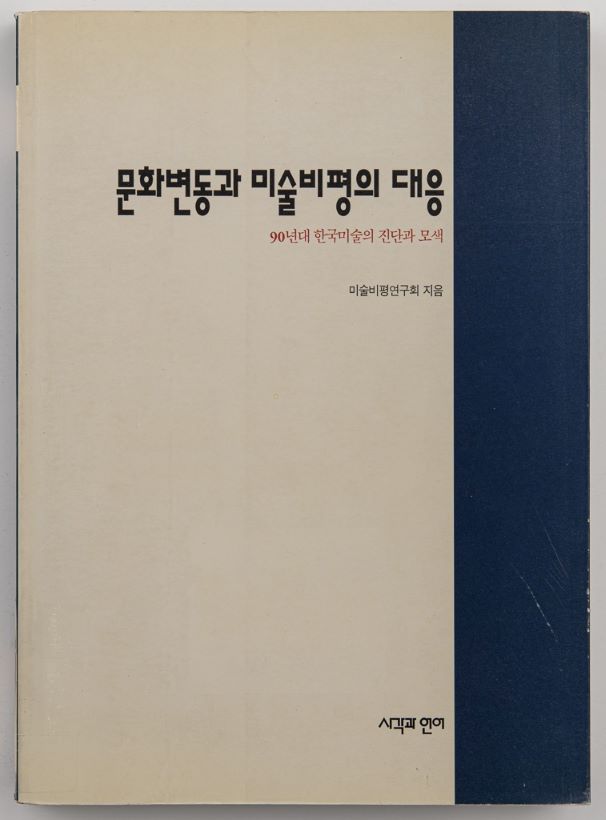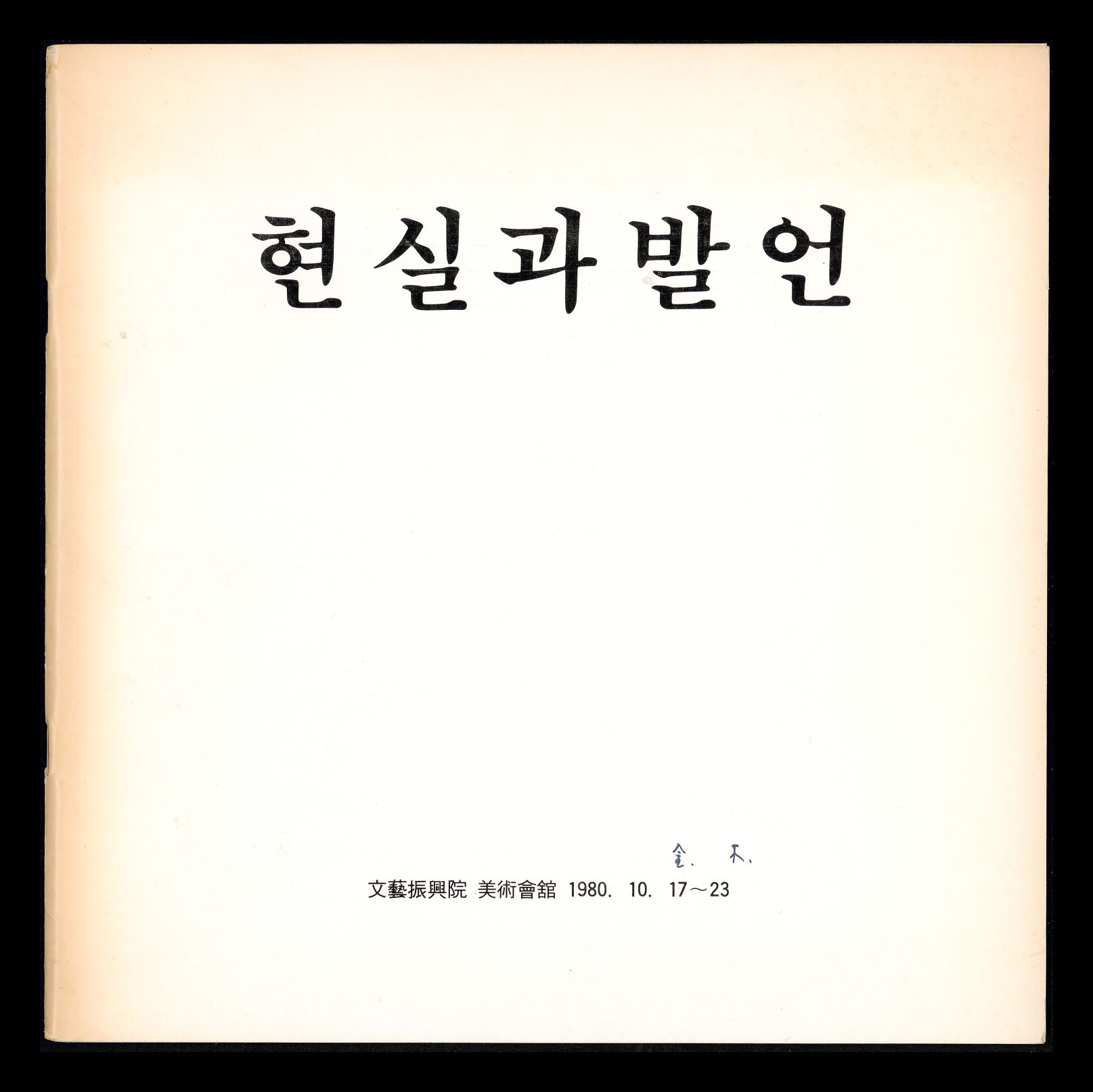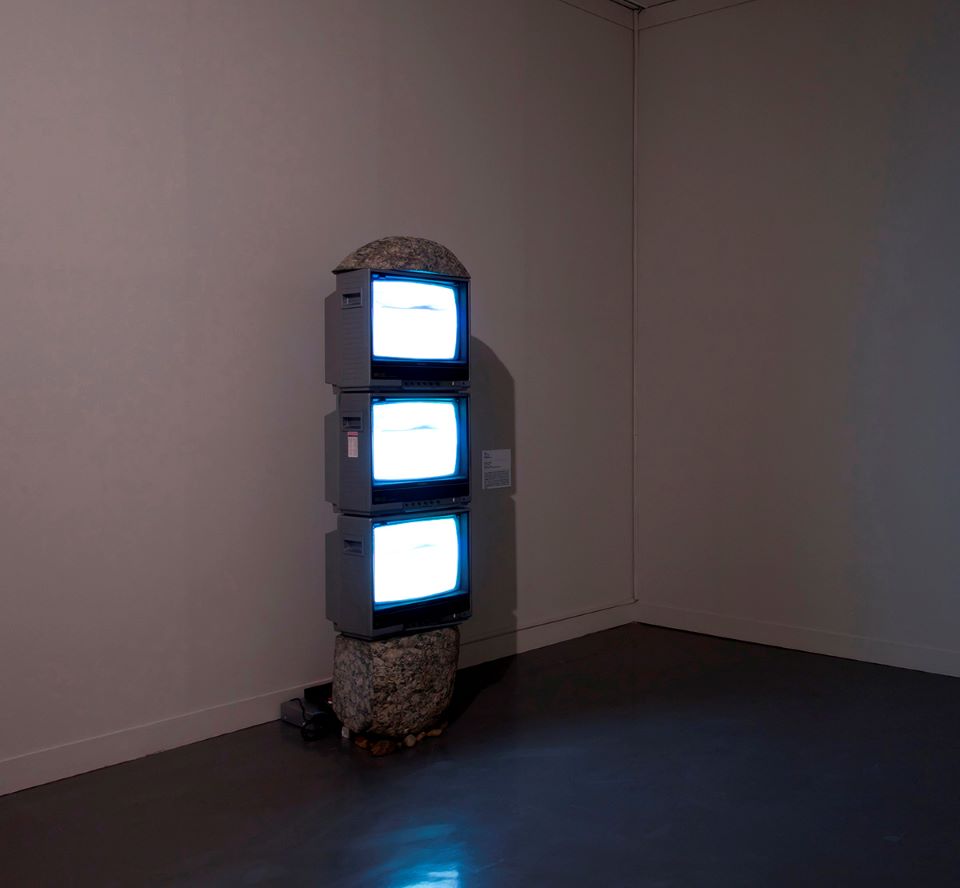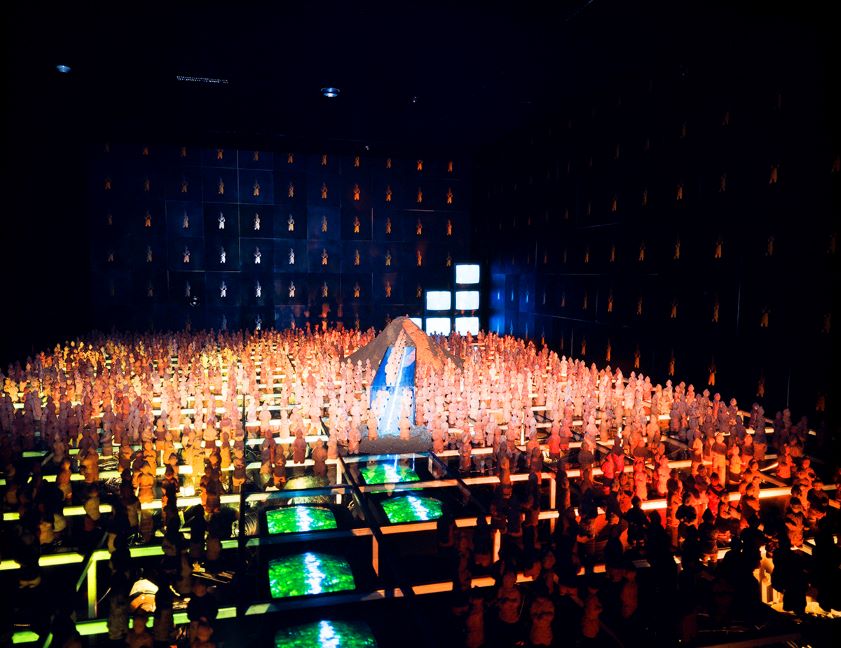
Visual culture
* Source: Multilingual Glossary of Korean Art by Korea Arts Management Service
Related
-

Research Society for Art Criticism
The Research Society for Art Criticism (Misul bipyung yeonguhoe) was founded by several critics interested in the field of progressive realism, such as Lee Youngwook, Shim Kwanghyun, and Lee Youngchul in 1989. The group aimed to develop the theoretical grounding for a new Korean nationalist art movement and methodology applicable to the rapidly changing social and cultural environment in Korea. They focused on Korean modern art, critical theory, cultural theory, and mass media theory. By providing theoretical support for Minjung art, the group played a significant role in the mainstream emergence of socially critical art in Korea. Major members of the society included Sung Wan-kyung, Lee Youngwook, Shim Kwanghyun, Lee Youngchul, Park Sinui, Eom Hyeok, Park Chan-kyong, Beck Jee-sook, Lee Youngjun, Kim Suki, Kim Jinsong, Kang Sungwon, Paik Han-ul, Oh Museok, Lee Yunam, Cho Bongjin, Choi Bum, Cho In-su, Gal Hong, Yang Hyunmi, Kim Yongcheol, and Lee Juyeong. The group was disbanded in July 1993.
-

Reality and Utterance
A group formed in 1979 by artists and critics that criticized the contradictory nature of industrial society and the conservatism of the art community. The group formed during preparations for an exhibition to mark the 20th anniversary of the 1960 April Revolution. The group emphasized a realistic attitude, namely that art must depict reality and reveal the underlying contradictions of society. The group borrowed from or copied pop culture images, and also used photography, prints, comics, reproductions, and collages. Such methods were considered a means to help critically address the overabundance of visual images in contemporary Korean society, the issues of urbanization, and the colonial nature of Korean culture.
Find More
-

Media art
Media art refers to artworks produced using media scientific technology. It is also called new media art. The term became popularized as it was used by Les Levine in the Software exhibition held at the Jewish Museum in New York in 1970. Media art utilizes as its main media the primary means of communication in contemporary society, including books, magazines, newspapers, films, radio, televisions, videos, and computers. In and after the 1980s, a vast body of works that were based on computer technology and emphasized interaction between them and the audience were created, leading to the emergence of interactive art.
-

Video art
A genre of modern art that uses video as a medium. After Paik Nam June created the first works of video art in 1963, the genre spread internationally. Video art explored new artistic possibilities using advanced technology and embodied a rejection of conventional art media. Video art was quick to drawn critical attention because of the relative immediacy that underlies the creation and display of such works, and the efficiency of the medium as means to portray and interlink a large number of images. Following Paik Nam June ’s early experiments with TV monitor installations in the 1960s, in the 1970s new forms of work emerged that combined video and performance art.
-

Installation
In a general sense, the term “installation” refers to the display or arrangement of artwork within an exhibition. In a stricter sense, the term “installation” can also refer to an art work specifically based in its wider display environment. Such installation art often attempts to enable the audience to become part of the new environment that the work creates. In this circumstance, the artwork becomes defined not only by its space, but also in terms of the relationship between the work, space and the audience.






